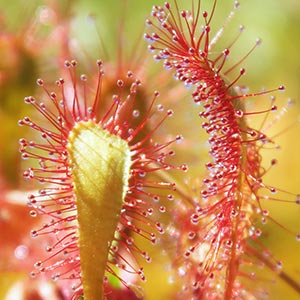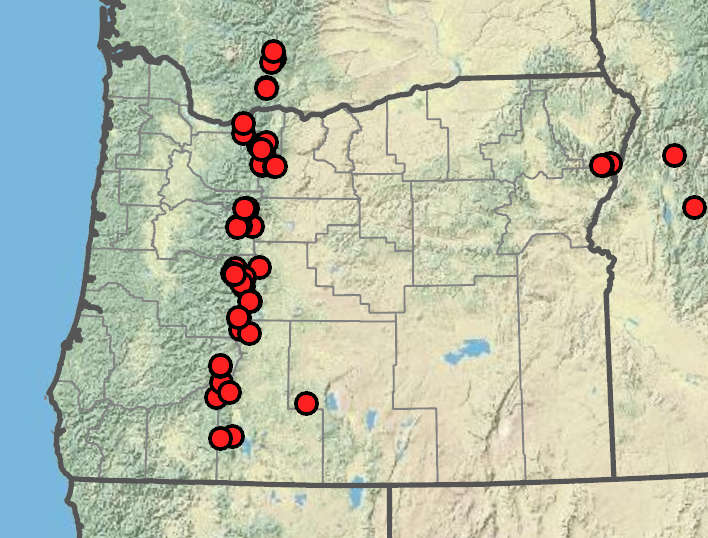Drosera anglica
Drosera filiformis
English sundew, great sundew, line-leaved sundew
ascending to erect, narrowly oblong-oblanceolate to spatulate-oblong or cuneate-obovate, 10–30(50) × (2)3–5(7) mm, tapering gradually to petioles;
petioles 1.5–8 cm, glabrous or sparsely glandular-hairy.
6–18 cm.
usually 1, sometimes 2, 2–7-flowered.
calyces (4)5–6 mm, connate about 33% of length;
petals 8–12 mm, white;
styles usually bifid ~67% from tips.
1–1.4 mm; black;
seed coats longitudinally striate-netted, prolonged but not flattened at each end.
=40.
Drosera anglica
Drosera filiformis
Swamps and bogs, especially in sphagnum. Flowering Jul–Sep. 800–1900 m. BW, Casc, ECas. CA, ID, WA; north to AK, east to Newfoundland and ME; Asia, Europe. Native.
Drosera anglica has been known to hybridize with D. rotundifolia to form the named hybrid “species” D. × obovata, a sterile triploid. These hybrids are intermediate in nearly all morphological characters.
Tamra Prior
- Local floras:
BC,
CA,
OR,
WA
- Local Web sites:
CalFlora,
CalPhotos,
Flora NW,
PNW Herbaria
WildflowerSearch
iNaturalist (observations)
USDA Plants Database
- LBJ Wildflower Center
- SEINet
- Plants of the World Online
- Encyclopedia of Life
- Wikipedia
- Google Image Search



